Abstract
The Harlem Hospital Injury Prevention Program (HHIPP) was established in 1988 with the goal of reducing injuries to children in central Harlem by providing safe play areas, supervised activities, and injury prevention education. To achieve this goal, a broad-based coalition was formed with state and local governmental agencies interested in injury prevention and with community groups, schools, parents, and hospital staff. An evaluation of the program in terms of both process and outcome formed a critical element of this effort. Since 1988 the HHIPP, as the lead agency for the Healthy Neighborhoods/Safe Kids Coalition, developed or participated in two types of programs: injury-prevention education programs and programs that provide safe activities and/or environments for children. The educational programs included Window Guards campaign; Safety City Program; Kids, Injuries and Street Smarts Program (KISS); Burn Prevention Curriculum and Smoke Detector Distribution; Harlem Alternative to Violence Program; Adolescent Outreach Program; and Critical Incident Stress Management Teams. The safe activities and environmental programs included the Bicycle Safety Program/Urban Youth Bike Corps; Playground Injury Prevention Program; the Greening of Harlem Program; the Harlem Horizon Art Studio; Harlem Hospital Dance Clinic; Unity through Murals project; baseball at the Harlem Little League; winter baseball clinic; and the soccer league. Each program was conceived using injury data, coupled with parental concern and activism, which acted as catalysts to create a community coalition to respond to a specific problem. Data systems developed over time, which monitored the prevalence and incidence of childhood injuries in northern Manhattan, including central Harlem, became essential not only to identify specific types of childhood injuries in this community but also to evaluate these programs for the prevention of injuries in children.
Full text
PDF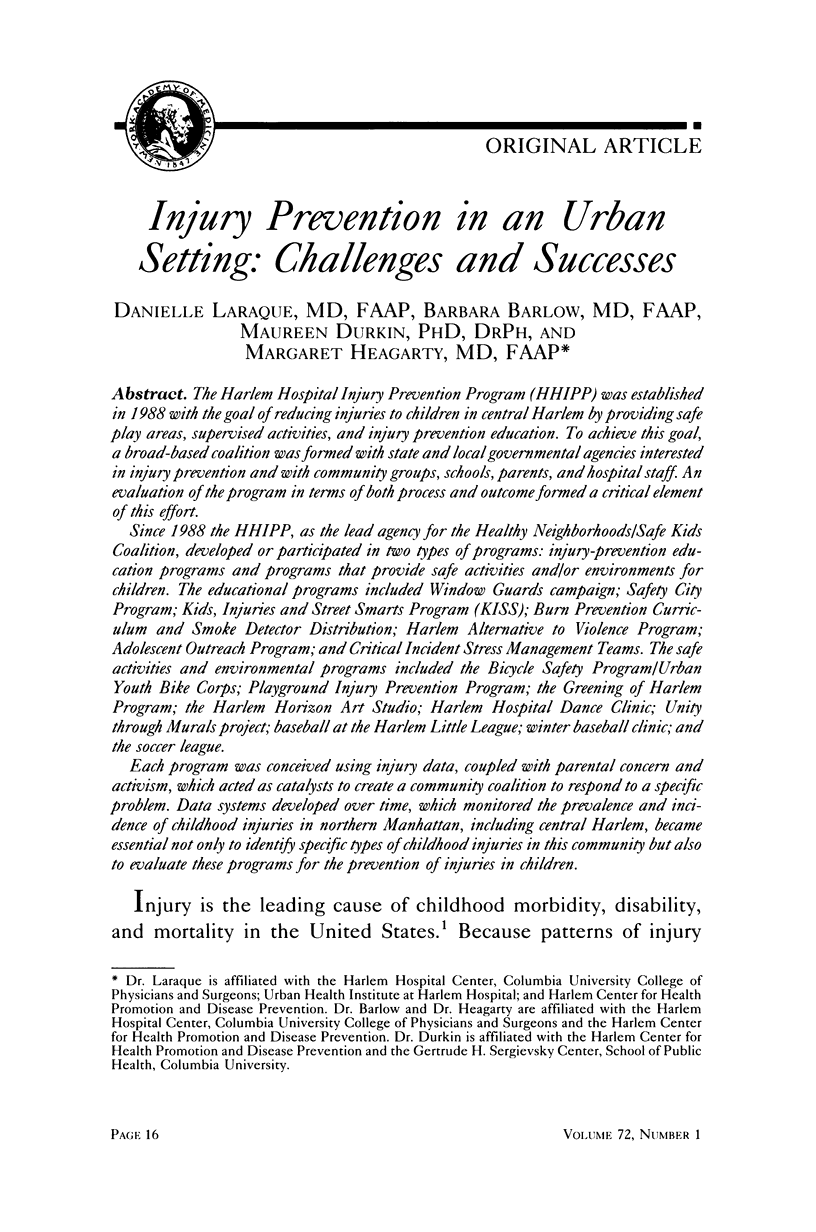
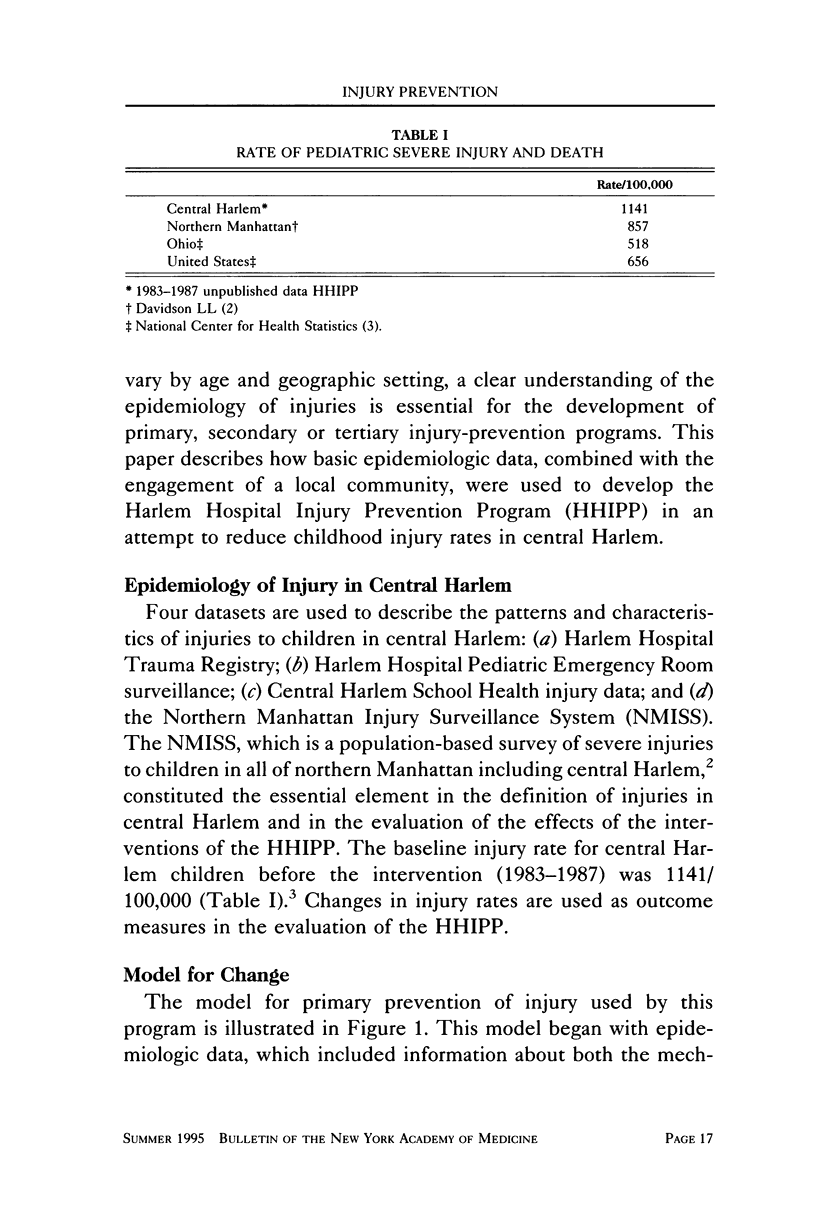

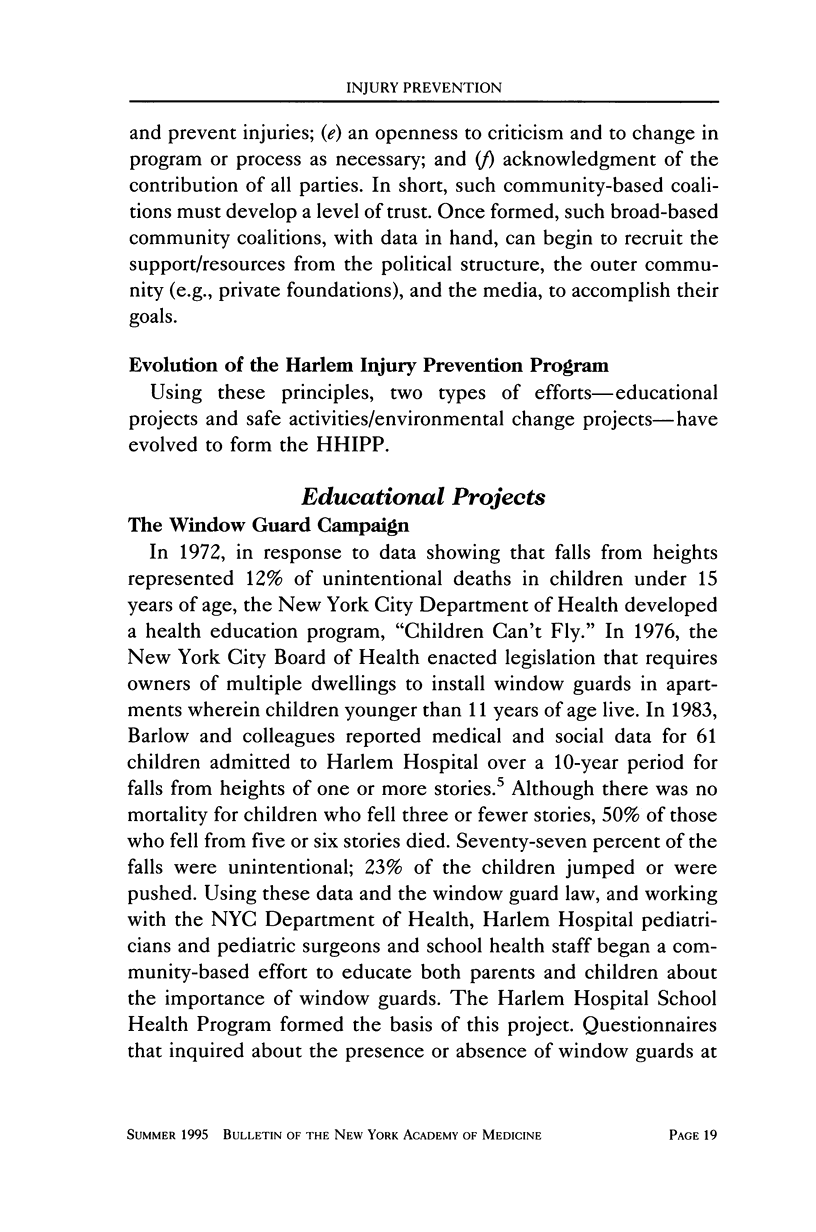
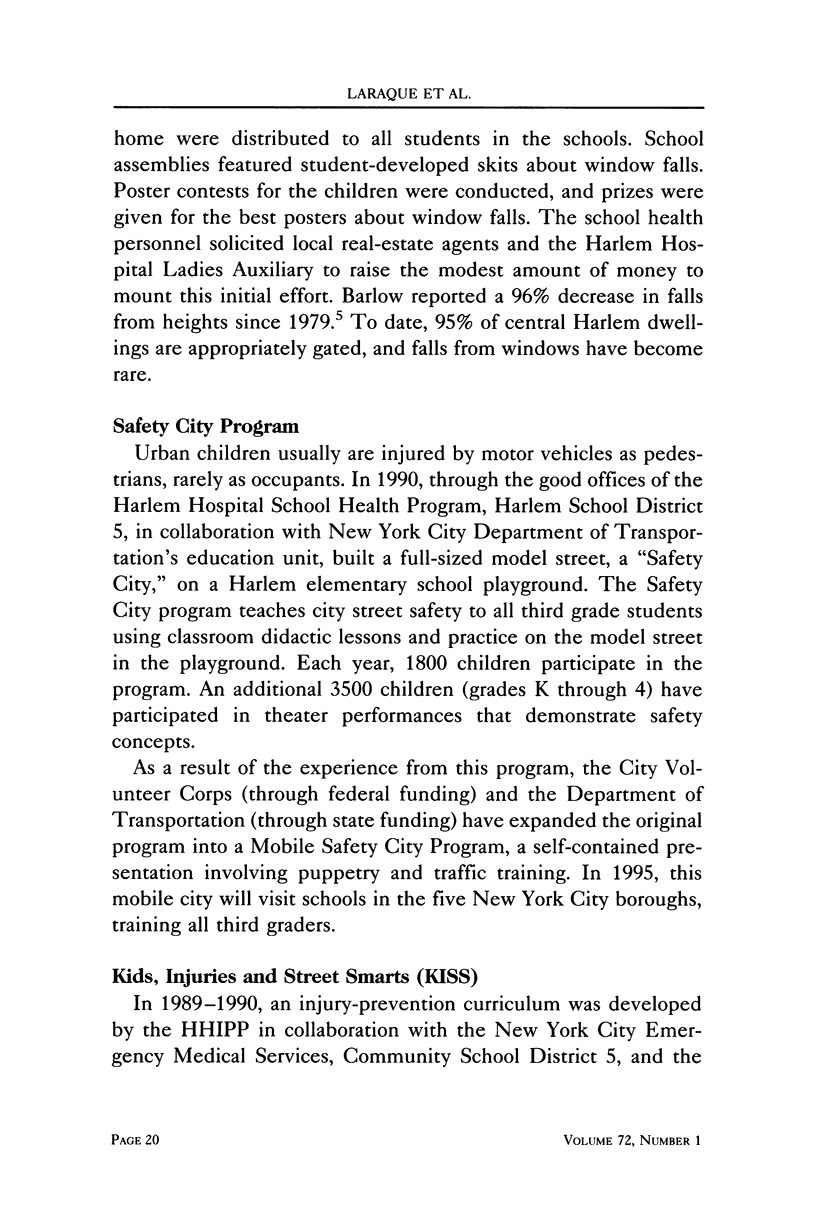
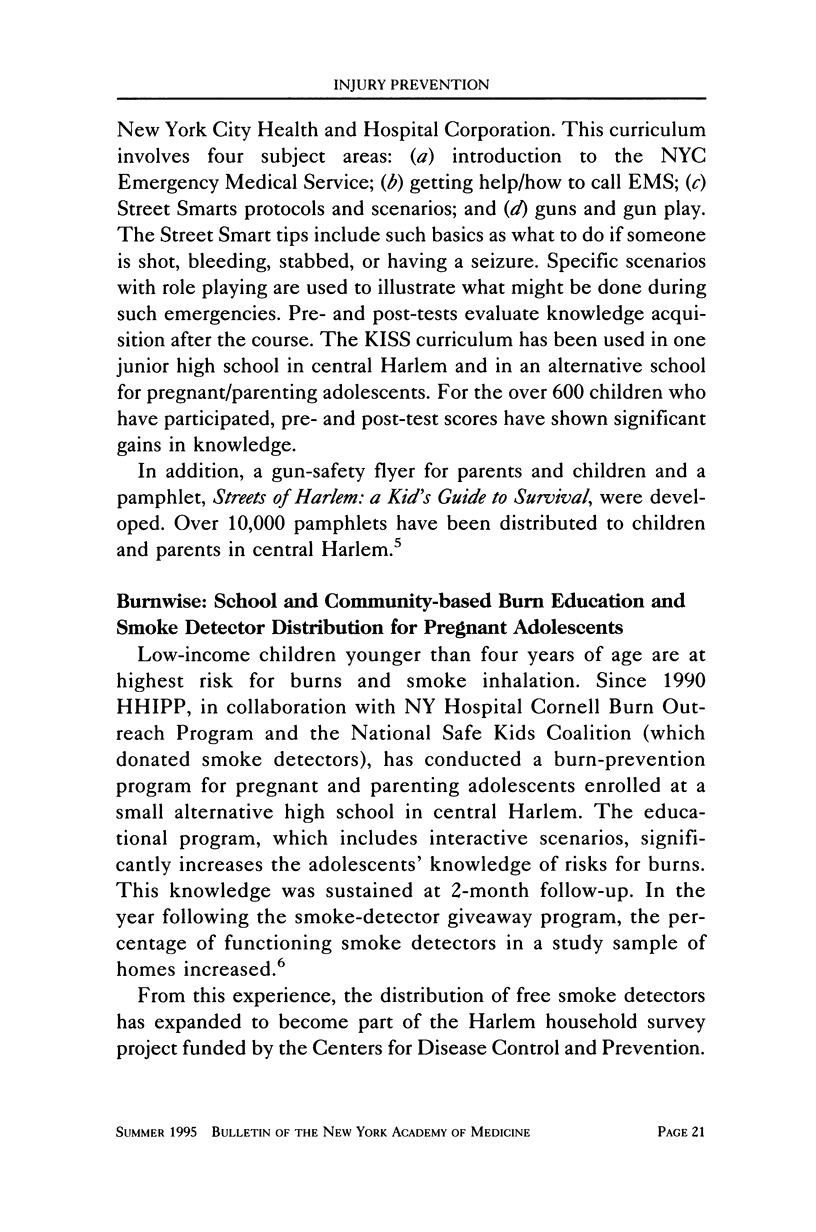
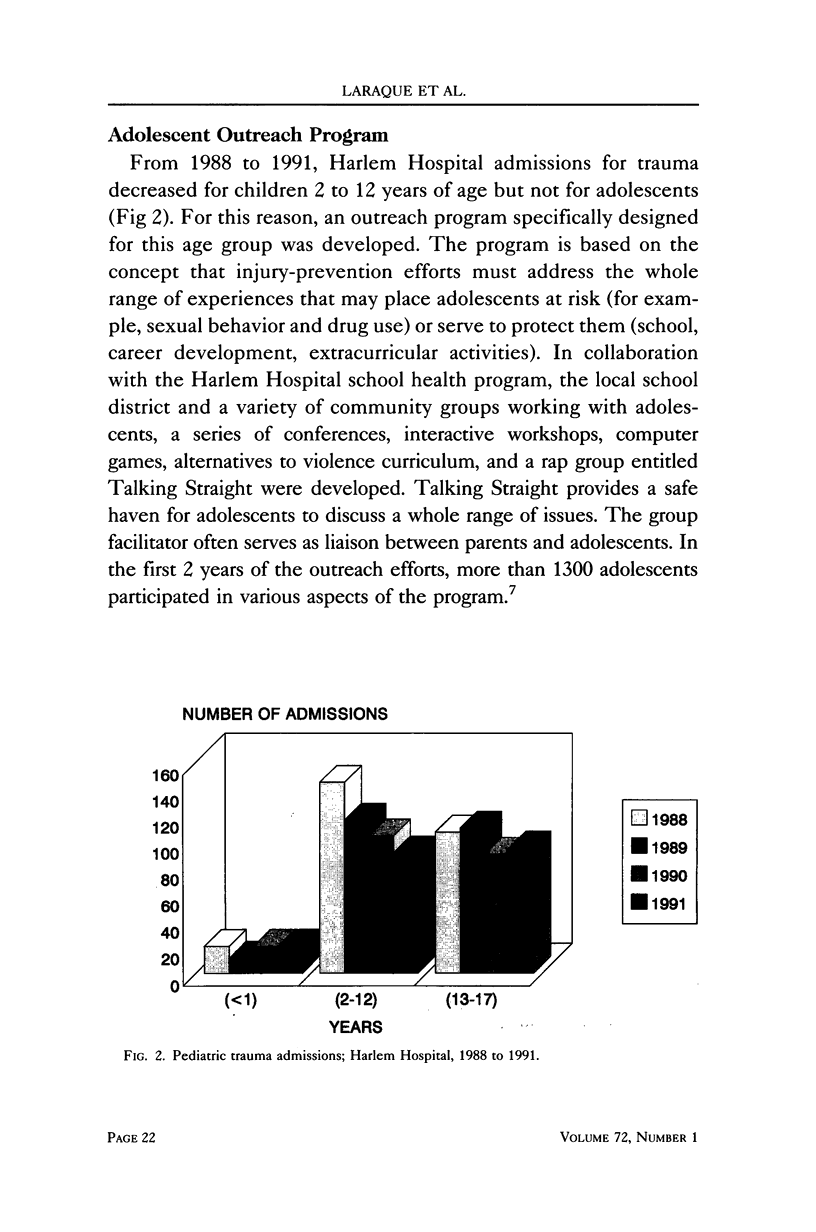
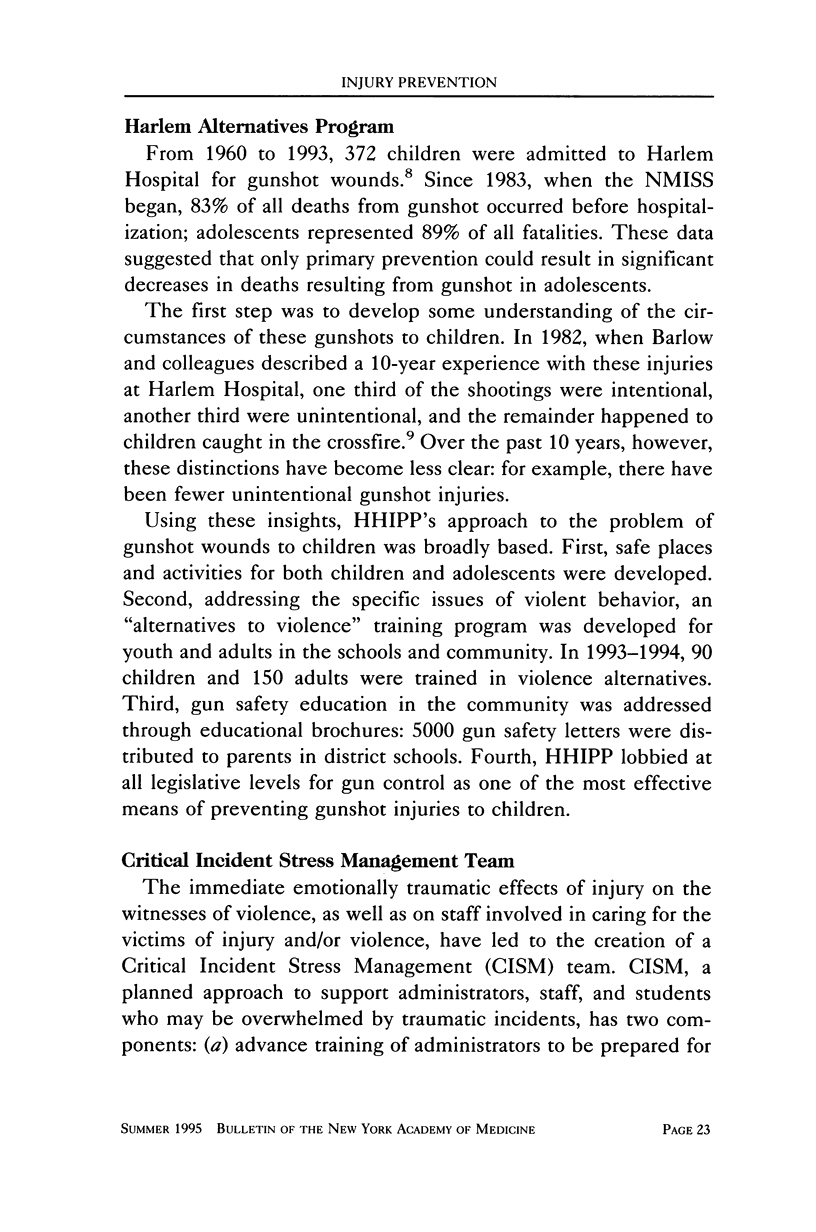
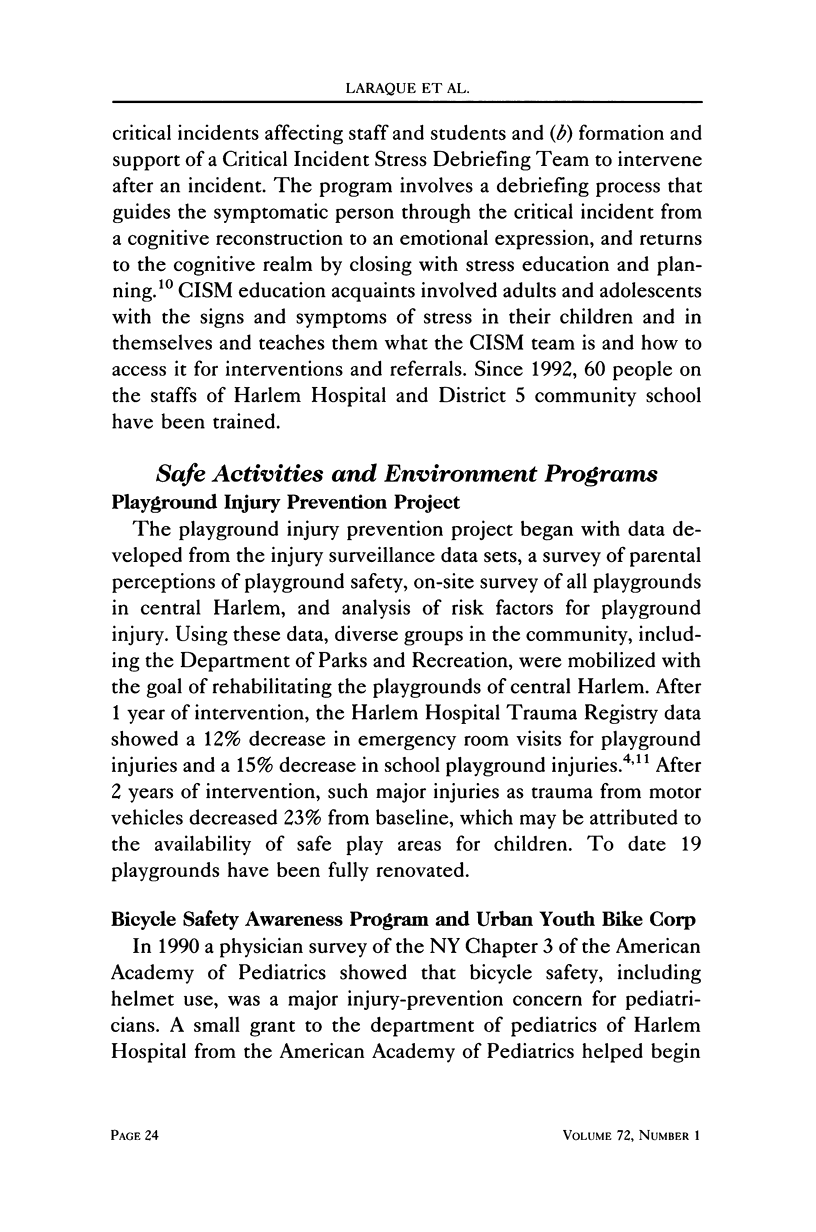
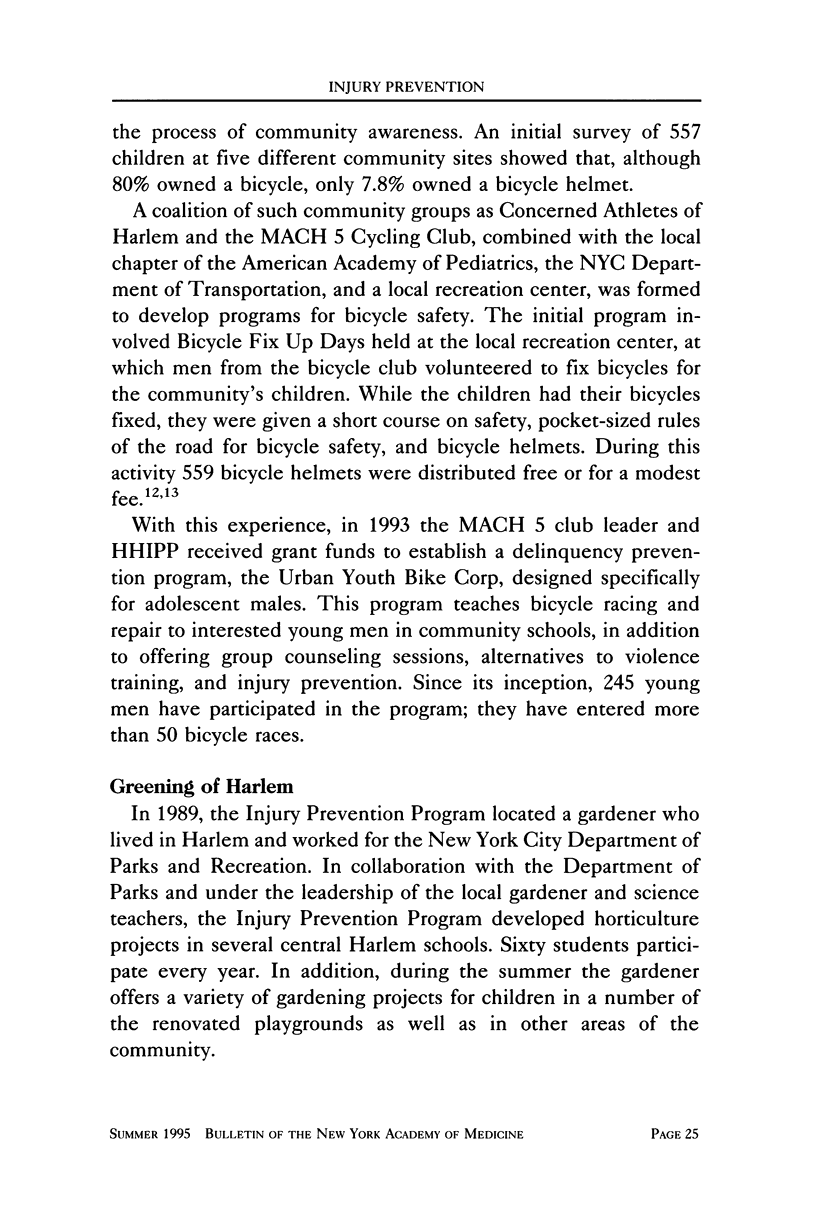
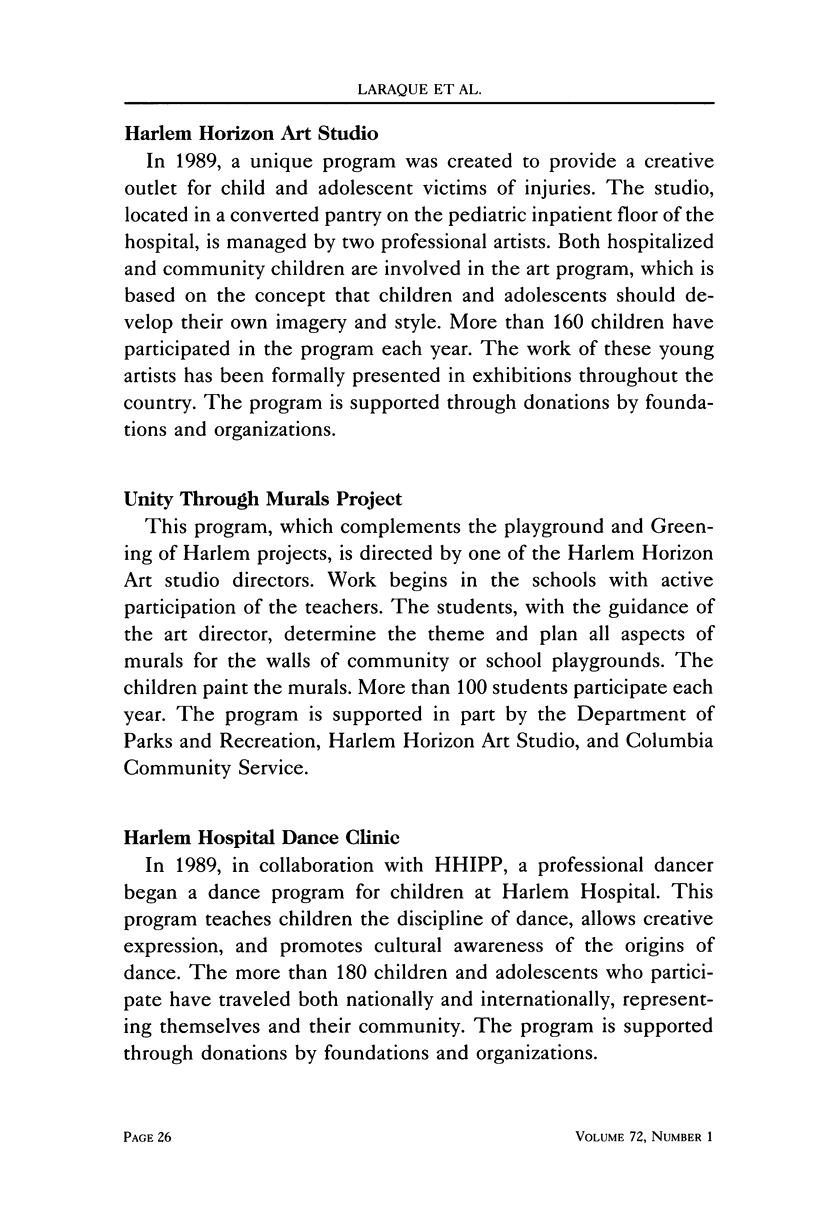
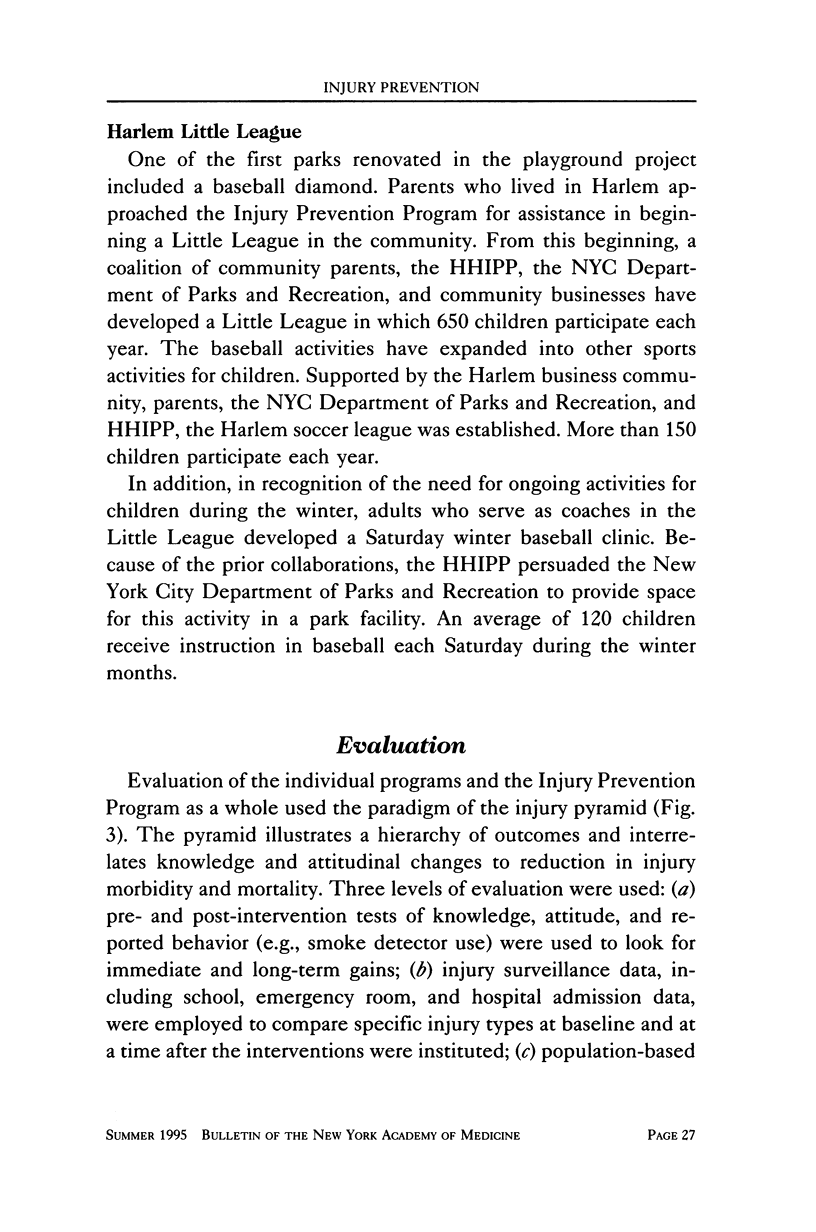
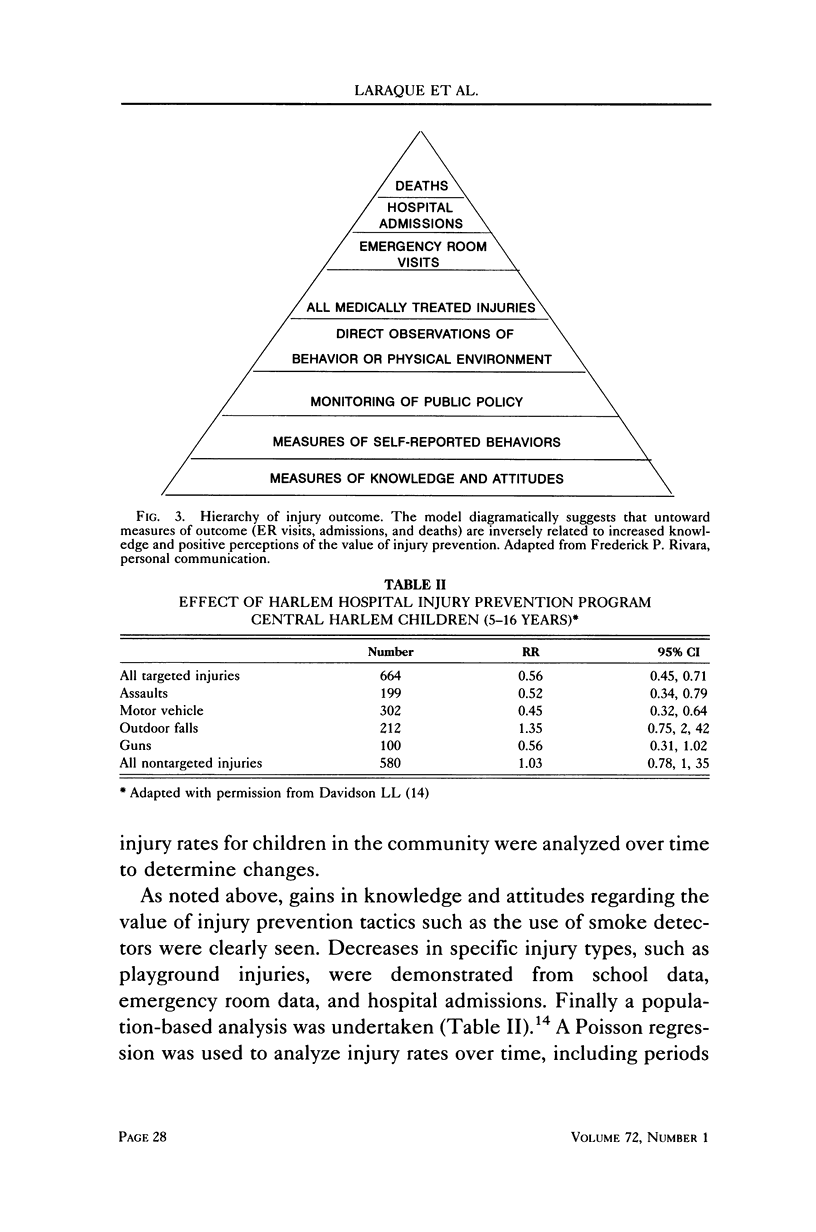
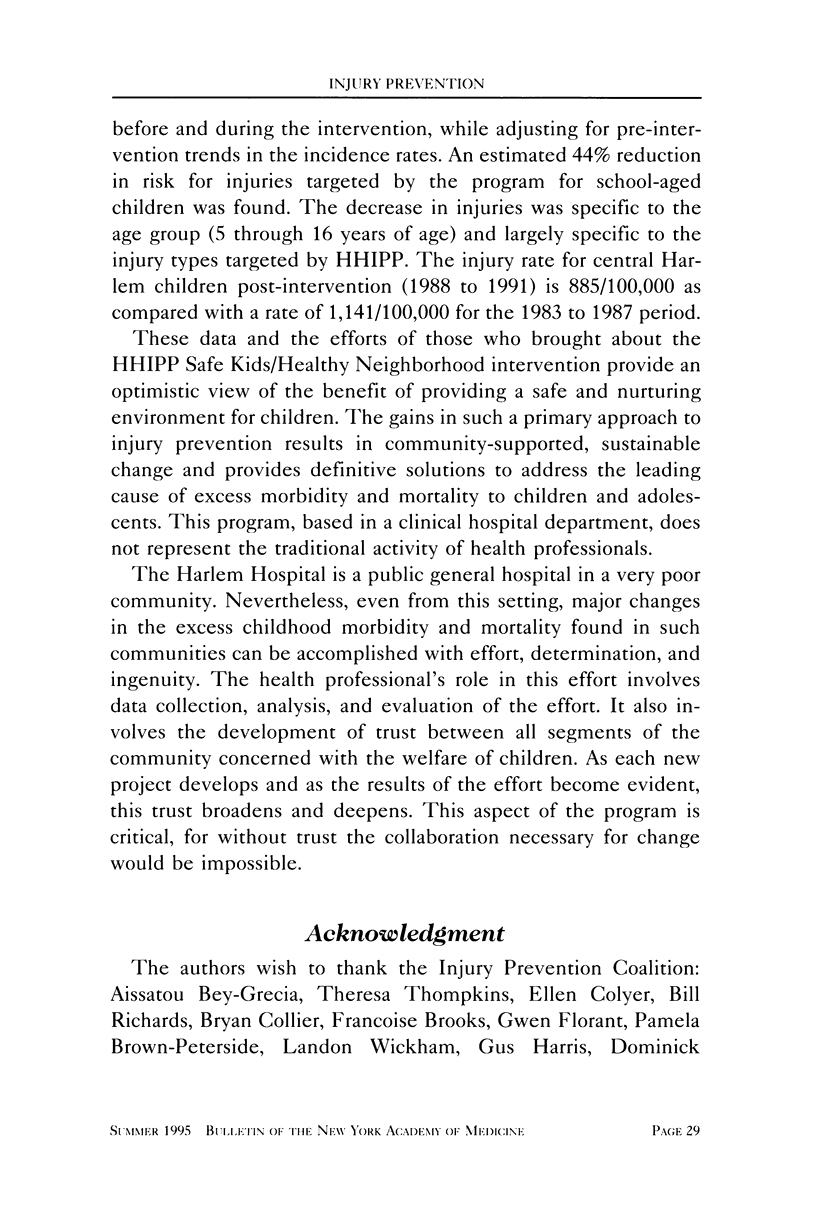
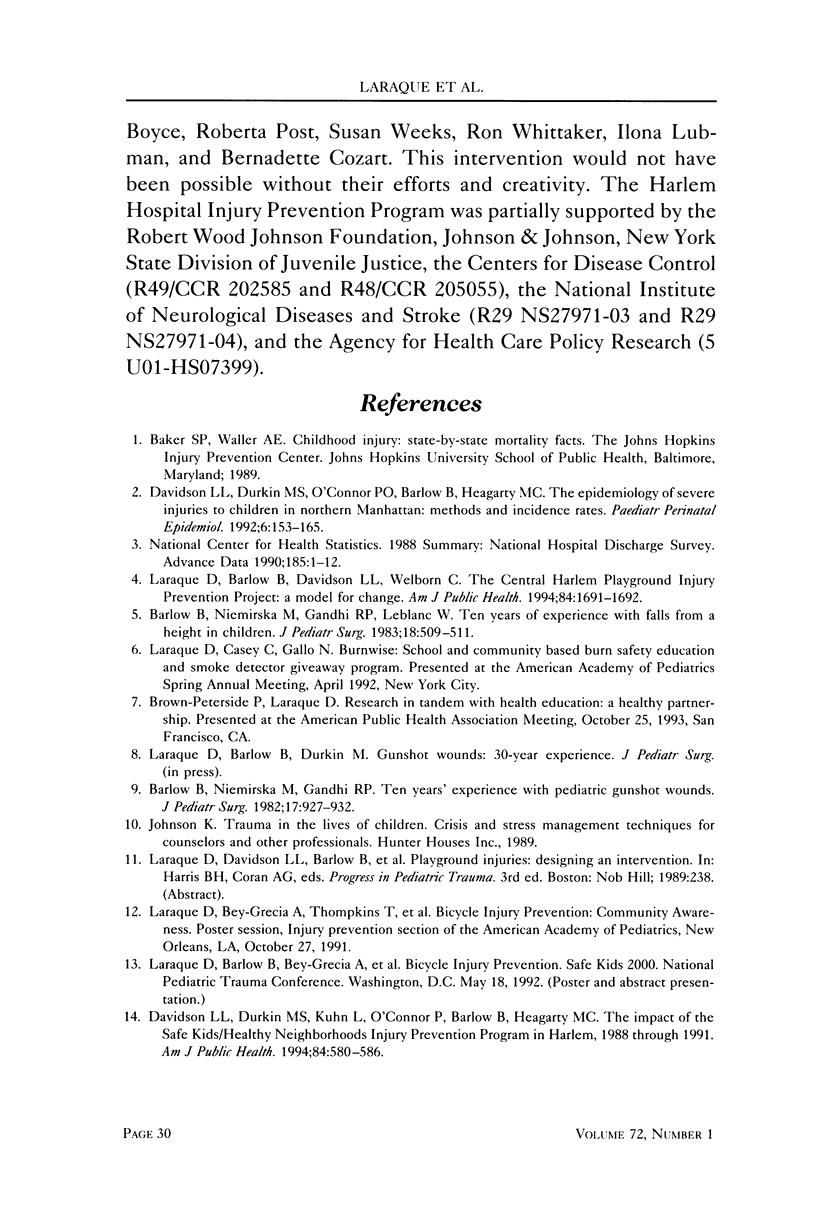
Images in this article
Selected References
These references are in PubMed. This may not be the complete list of references from this article.
- Barlow B., Niemirska M., Gandhi R. P., Leblanc W. Ten years of experience with falls from a height in children. J Pediatr Surg. 1983 Aug;18(4):509–511. doi: 10.1016/s0022-3468(83)80210-3. [DOI] [PubMed] [Google Scholar]
- Barlow B., Niemirska M., Gandhi R. P. Ten years' experience with pediatric gunshot wounds. J Pediatr Surg. 1982 Dec;17(6):927–932. doi: 10.1016/s0022-3468(82)80469-7. [DOI] [PubMed] [Google Scholar]
- Davidson L. L., Durkin M. S., Kuhn L., O'Connor P., Barlow B., Heagarty M. C. The impact of the Safe Kids/Healthy Neighborhoods Injury Prevention Program in Harlem, 1988 through 1991. Am J Public Health. 1994 Apr;84(4):580–586. doi: 10.2105/ajph.84.4.580. [DOI] [PMC free article] [PubMed] [Google Scholar]
- Davidson L. L., Durkin M. S., O'Connor P., Barlow B., Heagarty M. C. The epidemiology of severe injuries to children in northern Manhattan: methods and incidence rates. Paediatr Perinat Epidemiol. 1992 Apr;6(2):153–165. doi: 10.1111/j.1365-3016.1992.tb00757.x. [DOI] [PubMed] [Google Scholar]
- Laraque D., Barlow B., Davidson L., Welborn C. The Central Harlem playground injury prevention project: a model for change. Am J Public Health. 1994 Oct;84(10):1691–1692. [PubMed] [Google Scholar]



